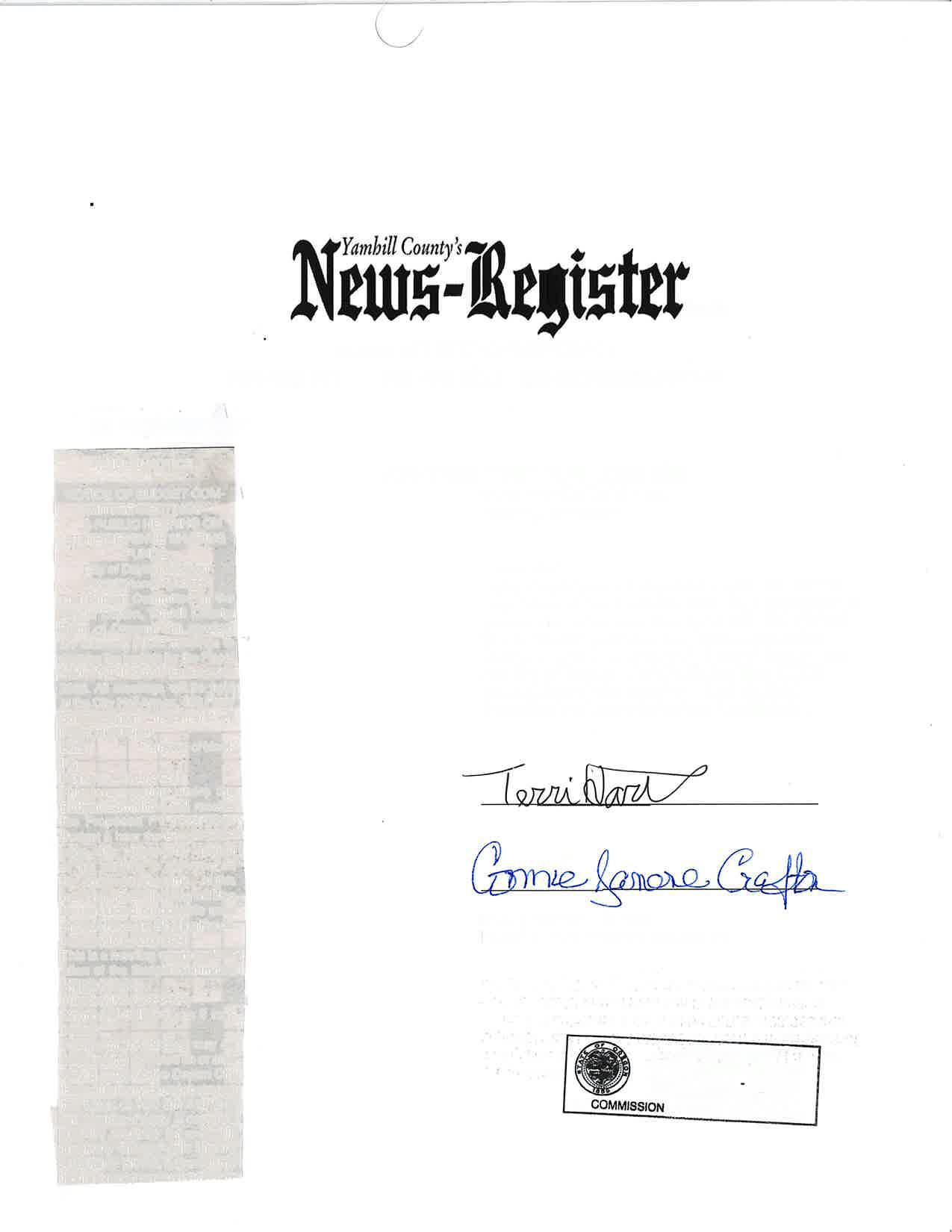








This page intentionally left blank

Annette Frank, Mayor
Angie Gonzalez
Luke Wildhaber, Council President Steve Hopper
Andrew Hildebrandt
Michael Howard
Kitty Mackin Larry Pederson
Jim Maguire Christopher Wytoski
Rosalba Sandoval-Perez
Rochelle Roaden, City Manager, Budget Officer
Rocio Vargas, City Recorder
This page intentionally left blank

The City of Dayton will provide inclusive, responsive, efficient, and ethical municipal government services to facilitate the health, safety, and livability of our community.
Vision Statement
Dayton is an authentic, family-friendly small town with deep historic roots and cultural diversity surrounded by rich agriculture. Our City is a vibrant place to live, work, and play. There is a strong sense of community in Dayton where people value creativity, health, and learning.
Mission Statement Motto
Rich in History…Envisioning our Future
This page intentionally left blank
This page intentionally left blank

The budget submitted herein is the proposed budget for the fiscal year beginning July 1, 2024, and ending June 30, 2025. The budget has been prepared to satisfy the legal requirements of the Dayton City Charter and the State of Oregon local budget law. This financial plan for the City is balanced and is within all the statutory property tax limitations. The proposed budget is the link between public policy, values, and available resources.
The budget was developed to continue existing traditional services provided by the City of Dayton. We anticipate that the proposed budget will require use of reserves in the General Fund this year to maintain services at current levels. This has been true for the last several budgets, however, the City has benefited from efforts to reduce costs to maintain a healthy amount of working capital. The 2024-2025 budget reflects responsible fiscal policy to maintain the Water Utility Fund and Sewer Utility Fund to meet operational expenses, debt service payment obligations and future anticipated costs for improvements.
The 2024-2025 budget is a modified line-item budget with separate appropriation pages for each function. The budget is presented in a format to describe the department’s activities and the revenue sources and provide explanation of the proposed expenditures in a manner that is understandable to the public. The City uses a cash basis of accounting for all revenue and expenditures for the City.
This year’s budget includes a 3% cost of living adjustment. However, any actual cost of living adjustment will be decided by the City Council in a public meeting in July The cost of health insurance benefits is projected to increase by 10% for medical, 7% for dental, 6% for vision and 5% for long term disability. Employees will continue to contribute 10% of the overall cost for insurance in 2024-2025. The City’s rate for the Public Employees Retirement System (PERS) increased from 18% to 23% in the upcoming year.
The Priority 1 Strategic Plan Goals for 2024-2025 are included in this budget document on page 7. This budget incorporates those goals and reflects the long-term priorities of the Dayton City Council. A full listing of the Dayton City Council strategic goals can be found on the City’s website at www.daytonoregon.gov.
The appraised taxable value of all the property within the Dayton City Limits increased from an estimated $153,407,389 in December of 2023 to $159,743,377 which is a 3% increase in appraised value. We estimate that the General Fund will receive approximately $258,000 in property taxes for City operations Under the rate-based system with Measure 50 property
tax limitations, the City can levy $1.7057 per $1,000 on all property which is limited to a three (3) percent increase in the general property tax levy plus an increase for new property value. Dayton has the lowest tax levy in the county.
The beginning fund balance is lower than last year due to increased costs across the board especially as companies start to true up their increases during the pandemic that they did push down to their customers in 22/23 and 23/24. With Measures 5 and 50 holding property tax revenues at 3% and expenses increasing from 5-20%, additional revenue streams are needed. The city staff will continue to research additional funding streams.
The unappropriated ending fund balance in the General Fund is $44,175 With reduced spending through the fourth quarter of 2023/24, this total should see an increase at the start of FY24-25. The unappropriated ending fund balance plays two main roles for the City’s General Fund: first, having a healthy unappropriated ending fund balance ensures that we do not run into a cash flow issue at the beginning of the fiscal year prior to receiving property taxes and other significant revenues; and second, it helps the City ensure that it will continue to have healthy working capital from year to year. The City will continue to strive to find cost-saving opportunities as each year we anticipate a drop in our beginning fund and unappropriated ending fund balance.
Personnel services are distributed in the General Fund and other funds based on the anticipated assignment of duties of employees. As previously noted, PERS is up 5% and health insurance another 10%. The City Accountant is retiring in July of 2024, so personnel services includes a month overlap so the new accountant can receive training and the annual audit can be accomplished before the current city accountant retires. The new accountant’s health insurance is an additional increase in FY24-25.
Materials and services appropriations are elevated this year compared to last year. Insurance is up 19%, as well as utilities at 17% for electric. In 2023, the City Council approved a large increase for the City’s IT/cybersecurity support contract. Cybersecurity threats are at an all-time high and with the active threats from international bad actors, it is imperative that we respond with heightened security for our water and water treatment systems as well as the administrative network. The City is also moving to online permitting or E-permitting due to a state requirement to allow online processing of building permits and payments by the end of 2024. The annual cost for this software is $7000 and will allow all our building and regular permits (park permits, Community Center rentals, and special event permits for example) to be done online. This will be a game changer for our residents and developers.
Additionally, several line items have been adjusted up or down according to the changing needs of the City
A 6-year levy for Public Safety services at $1.85/$1000 property valuation was approved by voters in the May 17, 2022, election. Dayton residents voted down a levy in November of 2021 which included an increase of $.45/$1000 to help cover increased costs over the prior 12 years. The $1.85 levy has been in place for 13 years now and is not covering the fund expenses mostly comprised of our Public Safety contract with the Yamhill County Sheriff’s Office. The beginning fund balance in the Local Option Tax Fund is diminishing year over year as expenses are increasing. A strategic goal of the Dayton City Council is to educate the community regarding the public safety levy prior to the expiration of the current levy.
Citations & Bail revenue is up, and Traffic School fees are down due to activity levels
Anticipated expenditures for the 2024-2025 budget are slightly higher than the prior year due to Yamhill County Sheriff’s Office increase of 3%. The increases are offset slightly by the reduced 911 services through YCOM. The 911 tax went into effect in 2021 and has resulted in increased revenue for YCOM which then means a reduction in dues for the cities of Yamhill County.
The City’s new app includes a code enforcement management tool which will allow the Code Enforcement Officer to process code complaints more efficiently and expeditiously. With only .50 FTE code enforcement funded through the Local Option Tax, finding efficiencies has a large impact on the service levels the city can provide.
The levy allows the City to contract for one full-time Deputy again this year, as well as 911 services, Code Enforcement, Court, and other support services.
All tax revenue since the City enacted the transient lodging tax in 2016 is in this fund with 70% required to be used for Tourism related expenses. Revenues were recovering in 23/24 from the impacts of the pandemic in 20-22.
Material and services costs are increased in FY24-25 to fund strategic goals and tourism, branding for the City, and the development of a new destination Dayton website.
The American Rescue Plan Act (ARPA) Fund was created last year. In March of 2021, President Biden signed the American Rescue Plan Act of 2021 which provided $350 billion in new Coronavirus Relief Funds for states, cities, and Tribes. The State of Oregon received an estimated $4.2 billion in funds with an allocation of approximately $609,000 for the City of Dayton. The city received the first 50% in August of 2021 and the second half in August of 2022. These funds can be used to respond to negative economic impacts and revenue shortfalls due to the pandemic. Funds can also be used for necessary investments in water, sewer, or broadband infrastructure. ARPA funds must be spent by December 31, 2024.
The FY24-25 budget includes a transfer of the remaining interest balance to the Sewer Capital Fund to be used for the HWY 221 Lift Station Replacement project. The City was awarded a $511,000 Water and Sewer grant through Yamhill County for 50% of the cost of the Highway 221 Lift Station Replacement. The City is required to match the other 50% and will use the remainder of the ARPA fund allocation to complete this project.
The City’s Street Fund has been more active over the last couple of fiscal years, and this will continue in the 2024-2025 budget, mainly regarding a Transportation System Plan Update, street patching and capital projects. For this activity to become sustainable and significant, an alternative revenue source for maintenance and improvements to the street system (streets, sidewalks, and storm drains) is needed The City has been able to find efficiencies and made plans for addressing maintenance and improvement issues, but only on a small scale. In the 2024/25 budget includes a Pavement Management Plan for the Transportation System to access the roads since our last review in 2017. Currently, there is no guaranteed funding mechanism to improve City infrastructure with any kind of regularity, but the plan
outlines the conditions of our current infrastructure and the amount of funding needed to keep up with needed maintenance
The City was awarded a $200,000 Transportation System Update through Oregon Department of Transportation. This grant is being managed though ODOT’s consultant so the City has budgeted for the labor for our engineer and planner that will be used as the grant match.
The City was awarded a $250,000 Small City Allotment (SCA) Grant from ODOT and the overlay of 7th ,9th and part of Church Street was completed in the summer of 2023. The City applied for another SCA grant for 8th Street but were not awarded. The City will apply for another grant in the summer of 2024.
The City will continue to evaluate funding options to invest in future street infrastructure improvements.
The Water Utility Fund contains programs that are mandated by the EPA and Oregon Health Authority. With recent significant capital investment in the City’s infrastructure the Council has set fiscally responsible rates to pay for operating, capital, and debt services. The Water Utility Fund does not anticipate any rate increases for FY 2024-2025. As the infrastructure continues to be upgraded, additional increases will be required to ensure that fees are covering the cost of the system and any additional debt service. A water rate study was completed in 2021. It was determined that changing our rate structure to use 200 cubic feet as our base instead of 400 will be an effective way to provide water services in a more equitable manner.
In August 2015, the City Council made the decision to withdraw from the Yamhill Regional Water Authority The City has been able to secure additional water resources without the need for regional water. Over the next several years, the City anticipates replacing the main transmission line between the watershed springs and the footbridge, as well as developing newly acquired wells and tying them into the water system. The City has applied for a $3 million Congressional Direct Spending grant for the main transmission line project in 2024 Also, a grant application has been submitted through Rep. Scharf’s office for the Fisher Farms Well Tie-In project and this project funding needs to continue to be pursued.
The waterline upgrade for the bridge project was initially estimated at $400,000 and covered by the ARPA grant we received from Yamhill County. It is now estimated at $750800,000. The Water Utility Fund transfer to the Water Utility Capital Fund is increased this year to help cover the additional cost of this portion of the project that our DEQ loan cannot cover. The beginning fund balance in the Water Utility Capital Fund is strong this year and this project will use some of those funds as well.
The City also needs to upgrade our PLC’s at the Water Treatment Plant. Lafayette’s water usage since completing their tie-in with McMinnville Water and Light has reduced the amount of water they are using from the joint wellfield so revenue for processing the water from the wellfields is budgeted flat again this year.
The City has established plans for addressing the City’s most pressing wastewater needs. The FY24/25 Budget proposes a $5.00/mth increase in October to cover increased costs.
This is in addition to the $13/mth that will be implemented in February of 25/26 to cover the capital project debt for the utility bridge and the Hwy 221 pump station. The Dayton bridge over the Yamhill River which carries our water mainline into the City and our sewer mainline out to the sewer ponds has been closed since 2018 and will be completed early this summer and the bridge will be reopened to pedestrian traffic.
A major challenge for the City’s wastewater system is Inflow and Infiltration of water into the system, which causes a capacity problem for the City’s sewer lagoon system. The City completed the Ferry Street Trunk Sewer replacement and Main Pump Station project in 2020 which has made an impact on infiltration. The City continues to evaluate options for continued improvement The City completed an Inflow and Infiltration Study with Keller and Associates in 2024 which was required by DEQ A result of this study is that the City needs to complete CCTV of our sewer basins on an annual basis which is budgeted for FY24-25. The City has also applied for a $2 million Congressional Direct Spending grant to replace 1965 sewer pipe from the MPS up to Church Street as well as applied for the Water Resources Development Act for $10 million in funding to replace 85% of our old sewer system pipes. Congress will vote on this in the fall of 2024.
The City’s Wastewater Master Plan is up for renewal in a few years and was budgeted in FY23/24 but due to sewer capital projects, was put on hold and will hopefully be completed in FY25-26.
The City secured funding for the bridge and sewer line upgrade portion through DEQ’s Safe Water Revolving Loan Fund. In 2022, the City was awarded a $1,000,000 grant through Yamhill County’s Water and Sewer Grant program which will fund $600,000 for bridge design fees and $400,000 for the water line upgrade. The City applied for a $2,000,000 Congressional Direct Spending grant for the bridge and sewer line upgrade in 2023 to help reduce the amount of debt that will need to be acquired. Unfortunately, we did not receive this funding. The City also applied through our State legislators and the Lottery Fund for a $3 million grant but unfortunately, we were not awarded this funding. The City worked with DEQ and were able to acquire an interest rate reduction from 1.72% to 1% which includes $700,000 savings
Staff will continue to look for grant programs to assist with the cost of large infrastructure projects.
Having a healthy beginning balance has provided stabilization for the City. The City’s budget will still have ability to provide local services. Regardless of the state of the economy, the City must remain prudent and strategic in our budget practices and pursuits. The impact of Measures 5 and 50 on property taxes is continuing to hold tax rate revenue to 3% increase each year when expenses are going up 5-20%.
The enclosed budget maintains City service levels for the 2024-2025 fiscal year and allows the City to prepare for long-term needs as well
I commend the staff, Mayor, City Council, and Budget Committee for their continued efforts in helping move the City forward, especially as tough decisions must be made. City staff
stand ready to assist the Mayor, City Council, and Budget Committee in finalizing a budget for City operations for another year.
Sincerely,

Rochelle Roaden, City Manager and Budget Officer

FY 2023-2024 Major Accomplishments
• Completed Utility Bridge Infrastructure Project
• Completed Inflow And Infiltration Report For Department Of Environmental Quality (DEQ)
• Completed Supervisory Control And Data Acquisition (SCADA) Upgrade At Water Treatment Plant
• Completed Overlay Of 7th And 9th Street (Between Ferry And Ash)
• Completed Bathroom Installation And Pedestrian Ramp Patching At Andrew Smith Park
• Developed Request For Proposals (RFP) For Dayton Village Property As Affordable Housing
• Completed Strategic Planning For Future Tourism Such As Branding And Development Of Dayton Tourism Website
• Created And Administered Community Survey To Gauge Citizen Opinion On Future Development And Tourism.
• Updated The Dayton Municipal Code:
o Clear Vision Code
o Design Code In The Central Business Overlay Zone
o Sunset Clause In Land Use Planning Chapter 7
o Parks Operation Policy
o Urban Renewal Agency
• Completed Property Line Adjustment For Legion Field And City Hall Properties
• Completed Palmer Creek Lodge Community Events Center Rental Analysis
• Brought Back Cinco De Mayo Annual Event With Parade
• Researched Offering Bilingual Classes At The Palmer Creek Lodge Community Events Center
• Completed And Implemented E-Permitting Software Installation With Online Payment Options
Goal A – Develop and maintain resilient infrastructure to support operations and meet growth.
• Complete Construction of a Steel Truss Bridge Main Span Replacement with Infrastructure Upgrades
• Complete HWY 221 Lift Station
• Research Transfer of Ownership of Ferry Street from ODOT to the City
• Add aeration to Sewer Ponds 1 and 3
• Ponds 2 and 3
• Update Wastewater Master Plan
• Transportation System Plan Update (TSP)
• Complete Road Overlays East of 3rd Street through Small City Allotment Grant
• Complete System Development Charge (SDC) Review
• Complete Building and Permitting Fee Review
Goal B – Create a livable community that is aesthetically pleasing, affordable, inviting, and with a vibrant and diverse economy.
• Complete the Sale of Dayton Village Property for Affordable Housing Development
• Complete Urban Renewal District
• Complete Housing Policy Update
• Work with ODOT to Install a Hwy 18 Welcome Sign
• Explore Special Event Permit for private property.
• Update the Dayton Municipal Code:
o Update Sign Code to include Temporary Signs
Goal C – Capitalize on Dayton’s facilities and resources to provide recreational and cultural opportunities.
• Develop Strategy for Ownership of the County’s Dayton Landing Park and Boat Ramp
• Research Shading Options of Playground Equipment at Courthouse Square Park
• Purchase and Installation of Post Clock in Courthouse Square Park
• Acquire Funding to Complete a Parks and Recreation Master Plan
• Update Park Reservation to Prohibit Sidewalk Blockage
• Remodel Historic Bandstand and Upgrade Utilities
Goal D – Use Dayton’s heritage and historic resources to forward our image as an authentic and charming town.
• GIS Historical Story Map for Dayton and Brookside Cemetery – “Tales of Dayton’s Pioneers” through certified local government grant
Goal E – Engage in efficient and effective activities to promote community safety and wellness.
• Establish an Emergency Operations Response Team partnering with the Dayton School District.
Goal F – Enhance communication to actively engage the community.
• Update Online Bilingual Communications to Include Audio
• Host Town Hall for Spanish Speaking Community Regarding City Services & Community Partners



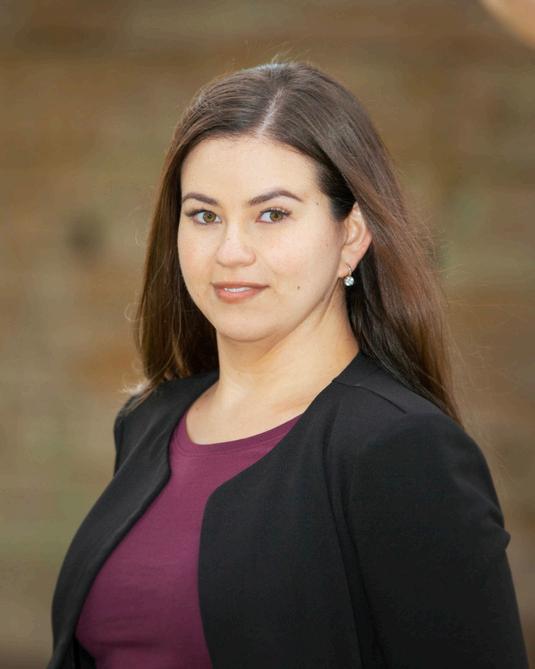

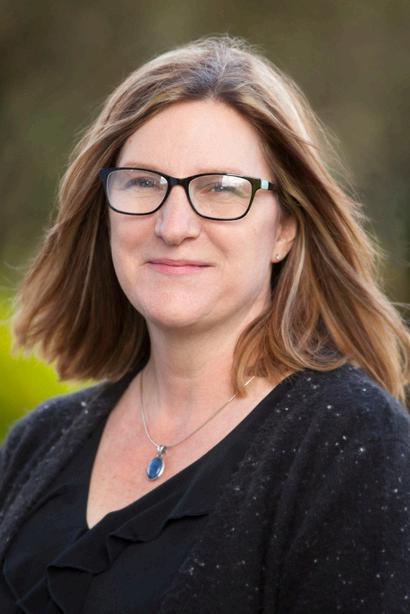








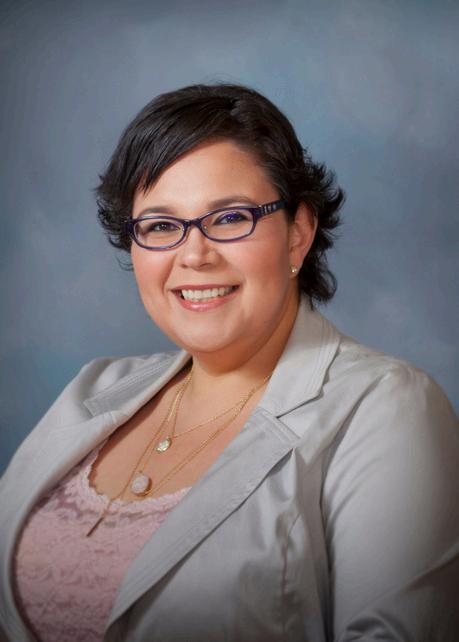
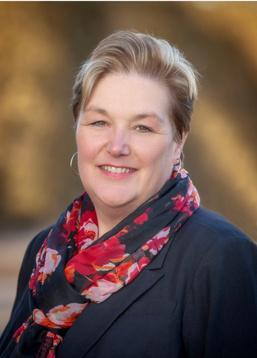

DAWN
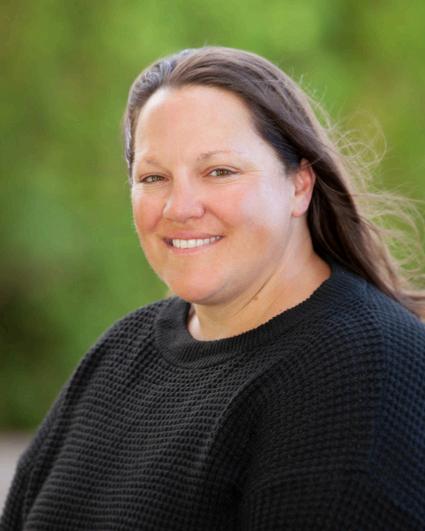
RICCI





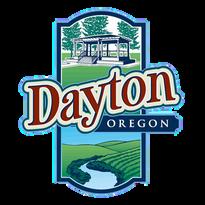
The City of Dayton is in the heart of the beautiful Willamette Valley. It is situated just off Highway 18 between McMinnville and Newberg and is centrally located 55 miles from the Pacific Ocean, 24 miles from the State Capital and 60 miles from Mt. Hood.
The 2023-2024 tax base of the City of Dayton (that amount within the statutory three percent limitation) is $159,743,377 which is $6,335988 more than in the pervious year
The City can levy $1.7057 Per $1,000 on all property Under the Measure 50 property tax limitations, there is a three (3) percent limit on the increase in value to existing individual properties each year unless improvements are made to the property
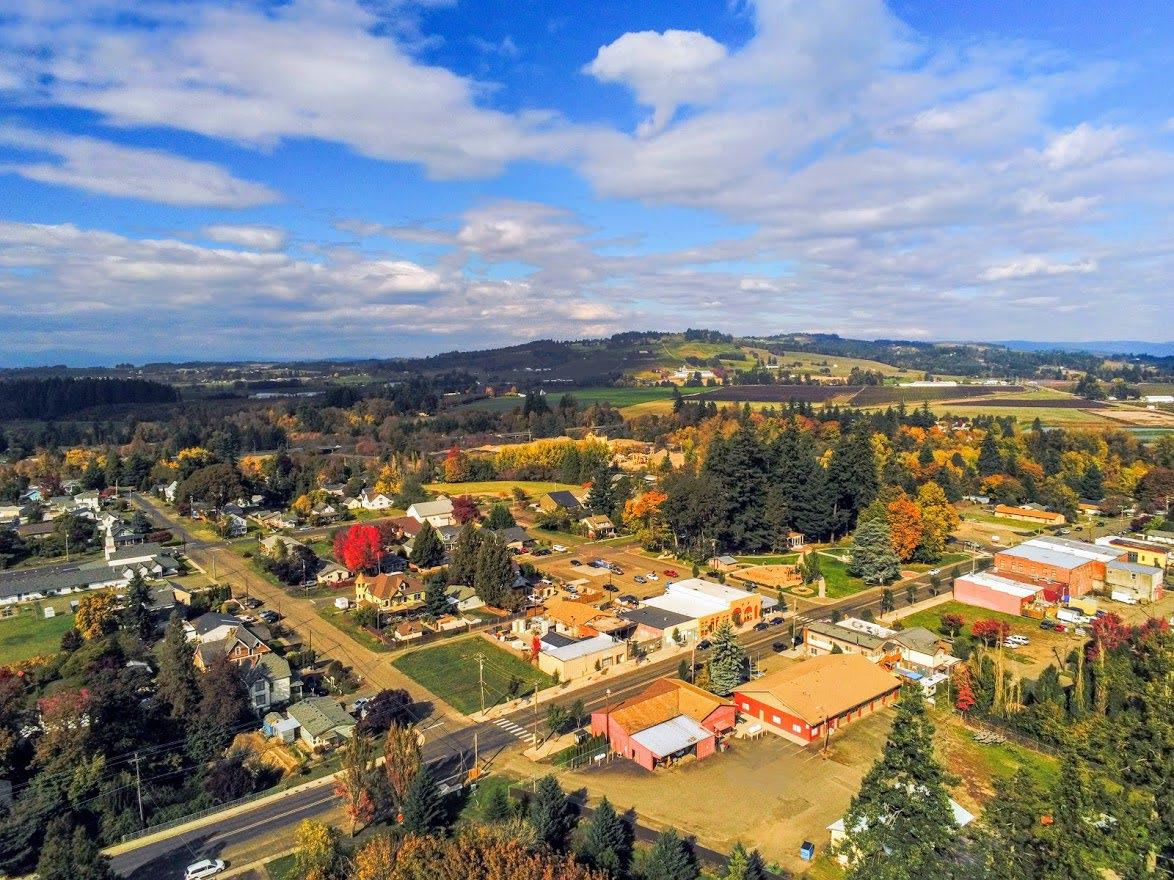
The City of Dayton budget is comprised of several funds including the General Fund (comprised of Administration, Parks, Library, Planning, and Building), Transient Lodging Tax Fund, American Recovery Act Fund, Local Option Tax Fund, Transient Lodging Tax Fund, Street Fund, Water Utility Fund, Sewer Utility Fund, State Revenue Sharing Fund, various Capital Funds, and the Debt Service Fund. The following page identifies the total revenue and expenditures estimates for all funds.
2023/2024
2021/20222022/2023
AdoptedProjected Revenues
General Fund
Local Option Tax Fund
Transient Lodging Tax Fund
American Rescue Plan Fund
Street Fund
Water Utility Fund
Sewer Utility Fund
State Revenue Sharing Fund
Water Utility Capital Projects Fund
Sewer Utility Capital Projects Fund
Equipment Replacement Reserve Fund
Building Reserve Fund
Street Capital Projects Fund
Parks Capital Projects Fund
Debt Service Fund
2021/20222022/2023AdoptedProjected Expenditures
General Fund
Local Option Tax Fund
Transient Lodging Tax Fund
American Rescue Plan Fund
Street Fund
Water Utility Fund
Sewer Utility Fund
State Revenue Sharing Fund
Water Utility Capital Projects Fund
Sewer Utility Capital Projects Fund
Equipment Replacement Reserve Fund
Building Reserve Fund
Street Capital Projects Fund
Parks Capital Projects Fund
Debt Service Fund
2024/2025

The General Fund receives and distributes money for general operations of the City of Dayton Revenues include all property taxes, franchise payments, fines, fees and reimbursements The General Fund also includes Working Capital, which is the amount carried over from the previous fiscal year It distributes money to support the administration, parks, library, planning, and building functions of the City.
The chart below identifies the projected sources of funds for the General Fund in the Fiscal Year 2024-2025:


Beginning Fund Balance
Property Tax
Franchise Fees
State Alcohol/Cig/Marijuana Tax
Rental Fees
Planning Fees
Building Fees
Miscellaneous

Library Reimbursement
The General Fund relies on franchise fees, state taxes for alcohol and cigarettes, and property taxes to maintain services. Revenues were down in 19/20 and 20/21 due to the COVID-19 pandemic State Marijuana taxes were reduced substantially In 2021 due to Measure 110. Building permit and planning fees were up the last two years due to the Dayton School District’s remodel, the Sweeney Street subdivision completion and the Twin Towers – 300 Ferry Street Project which correlates to the increased building and planning expenses in 23/24.
In the pages that follow, expenditures of each of the departments are described.

The Administration budget supports all City management, city recording and elections as well as financial management and general operations of the City.
This fund includes a portion of the City Manager’s salary. The City Manager is the chief administrative officer of the City. The manager is responsible to the Mayor and City Council for the administration of all city business, assists in the development of city policies and carries out policies established by ordinances and resolutions
Also included in the Administration budget is a portion of the Accountant’s salary for the maintenance of accounting records for the City, payroll and internal audit controls The department staff is also responsible for receipting all cash, recording revenues, and maintaining bank accounts. A portion of the City Recorder’s salary is also included.
There are also proportional shares of salaries included in this budget for other duties carried out by departmental staff attributable to administration, the Mary Gilkey Library and City facilities including the Community Center.

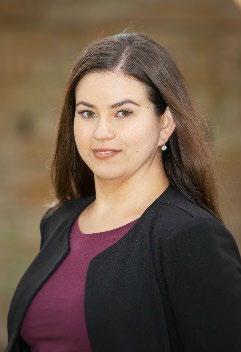




The City’s Public Works Department maintains all park facilities, including picnic tables and benches, playgrounds, ball fields, picnic shelter, restroom facilities, and numerous trees, shrubs and flower beds.
The Historic Preservation Committee received a CLG (Certified Local Government) grant in 22/23 to continue with restoration projects for Brookside Cemetery which the City gained ownership of in 2018. They have been awarded another CLG for 23/24 to create a GIS Historical Story Map for Dayton and Brookside Cemetery – “Tales of Dayton’s Pioneers”.
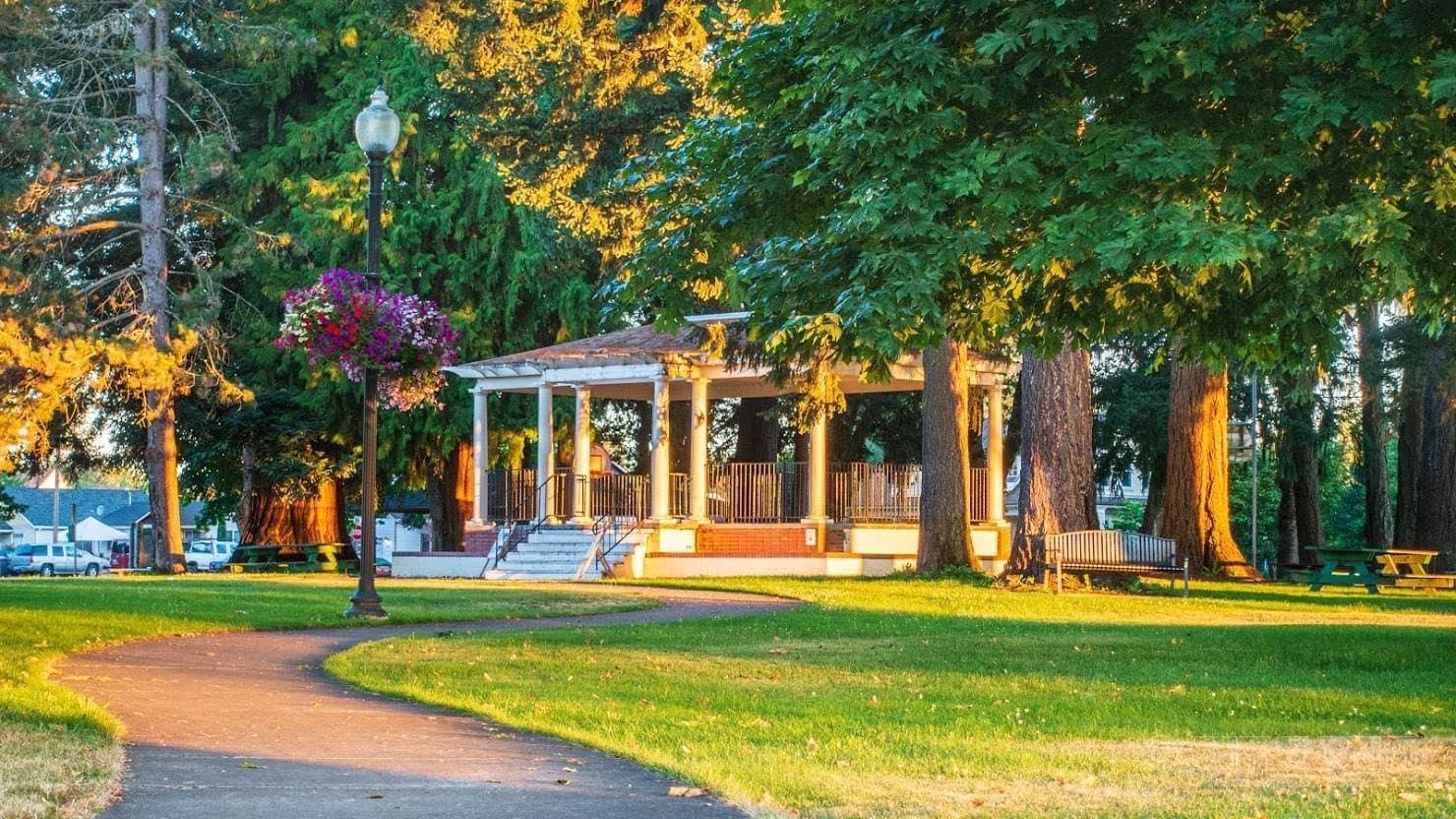
Legion Field was owned by both the City and the Dayton School District. In 2022, DSD Board of Directors agreed to transfer their ownership to the City as the City had been maintaining the property. As a result, the Dayton City Council has directed staff to complete a Parks Master Plan which is included in this budget. The City is hoping to fund this with a grant from the State of Oregon Parks Grant program.


The Mary Gilkey City Library is located next to Dayton City Hall and serves the community as an information resource. The Library is housed in a space that is approximately 1,300 square feet. Our collection includes approximately 12,000 books and other materials, including many resources for children in both English and Spanish. The library also provides a variety of in-person programs, take-and-make kits, a vibrant Summer Reading Program and an annual Halloween Party.





In both 2023 and 2024 we have seen a decline in media lending (DVDs and audio books), and an increase in the circulation of graphic/illustrated novels. The Mary Gilkey Library is a net lending library, meaning we loan more materials to our patrons, rural patrons, and other CCRLS patrons than our patrons borrow from other CCRLS libraries.
The City of Dayton holds membership in the Chemeketa Cooperative Regional Library System (CCRLS). Benefits of our membership include computer networking and equipment, centralized software administration and support, cataloging services, and payment for numerous online services such as downloadable audio and eBooks, readers advisory services, language learning software, and access to online databases available through the Oregon State Library.
The Planning Commission is comprised of five citizen members nominated by the Mayor and appointed by the City Council. The Planning Commission is a quasi-judicial body that reviews and processes land use applications including development proposals, land divisions, variance requests, conditional use requests, zone changes, and more.
The Historic Preservation Committee, an advisory committee to the Planning Commission, assists in preserving resources on the National Register of Historic Places within our community.
The City of Dayton utilizes the services of a contracted professional planner through the Mid-Willamette Valley Council of Governments (COG) to administer the planning program, as well as Dayton employee staff time.
In 2023, the City of Dayton amended the Dayton Municipal Code Chapter 7 with Clear Vision Standards, Design Code in the Central Business Overlay Zone, and added a Sunset Clause to the Dayton Land Use and Development Code (DLUDC).
The planning staff processed a Historic Demolition Permit, a Property Line Adjustment, and a Zone Change Application.


Building Department staff assist homeowners and builders in complying with City, State and Federal code requirements. Staff offers essential information for businesses, homeowners, landlords, tenants, contractors and developers. In addition to processing and issuing building permits, staff assists applicants in the issuance of Type A and B construction permits.
The City of Dayton contracts for professional building inspection services with the City of Newberg. All fees are assessed and collected by the City of Dayton and a proportional share is paid to the City of Newberg. Staff salaries are proportional based on time spent on building related activities.
The last two fiscal year building permit revenue and expenses show significant increases due to School District Bond projects at the Grade School, Jr High and High School The residential activity also was steady through the last two years with the completion of the Filbert Pointe subdivision (Sweeney & Ferry Streets), which offered 16 single family lots with 9 of those lots dedicated as single family attached affordable housing. In the current year, the Twin Towers 300 Ferry Street Project has continued the trend and building permit revenue and expenses are elevated this year.
This page intentionally left blank

The Local Option Tax Fund is that part of the budget that provides public safety services to the City of Dayton. The City assesses $1.85 per $1,000 of tax valuation for these services. FY 2021/22 was the third year of the 3-year levy for the local option tax. Dayton voters approved a 6-year levy with the same assessment values of $1.85 per $1,000 of tax valuation in the May 17, 2022, election
The City currently contracts with the Yamhill County Sheriff’s Department to provide our City policing, criminal law enforcement, issuance of citations based on City Ordinances, traffic enforcement, preparation of reports and related services. This contract provides for one full time Deputy, a vehicle, training and certification, equipment, communication facilities and supplies.
Budgeted in this fund are the expenses required to support the 911 dispatch service administered by Yamhill County. Additionally, this fund includes our code enforcement program and court operations. Code enforcement is that part of the City that responds to Municipal Code and Land Use complaints.
In 2015, the City enacted an 8% Transient Lodging Tax (TLT) and started receiving revenue in 2016. This revenue was recorded in the General Fund and 70% of the funds were transferred to the State Shared Revenue Fund for tourism. In FY2019-20 the TLT Fund was created and all TLT tax revenue was transferred into the fund. Up until 2023 no expenditures were made with TLT funds received since the tax had been imposed.
Per Oregon State law, any local governments that imposed a TLT after July 1, 2003, may only spend TLT tax dollars in three ways:
(1) For “tourism promotion” or “tourism-related facilities” as those terms are defined in ORS 320.300;
(2) For city and county services; or
(3) To finance or re-finance the debt on tourism-related facilities and pay associated administrative costs, with some restrictions. In addition, if the local government imposes a new tax, it must comply with the 70/30 distribution.
In 2023 the City committed to budgeting funds for a new Tourism/Economic Development Director (TED) along with three major strategic goals for 23/24 that included development and distribution of a city-wide Economic Development Questionnaire, development of a tourism website and a branding project.
For 24/25, the City will again support the same initiatives with the intent to complete website development, putting more emphasis on branding and marketing of Dayton’s tourism assets (including the addition of Merchant Block amenities and cooperative efforts with Dayton’s 14 wineries), and enhancement of its public amenities (parks).

This page intentionally left blank
On March 11, 2021, President Biden signed into law the American Rescue Plan Act of 2021. Funds have been allocated to cities and states to offset the loss of revenue due to the COVID-19 pandemic.. The City of Dayton is received half of our allocation in August of 2021 amounting to $304,670. We will receive the remainder of in August of 2022.
What uses are not allowed for the funds?
• Reducing taxes by legislation, regulation or administration.
• Deposits into pension funds.
Yamhill County allocated $6 million of its ARPA allocation to a water and sewer grant program. The City was awarded $511,000 for the HWY 221 Lift Station Project which is 50% of the project total. The City is required to match $511,000 which will be funded by the remainder of the City’s ARPA direct allocation and is shown as a transfer to the Sewer Utility Capital Fund for that project.
The funds can be used until December 31, 2024.
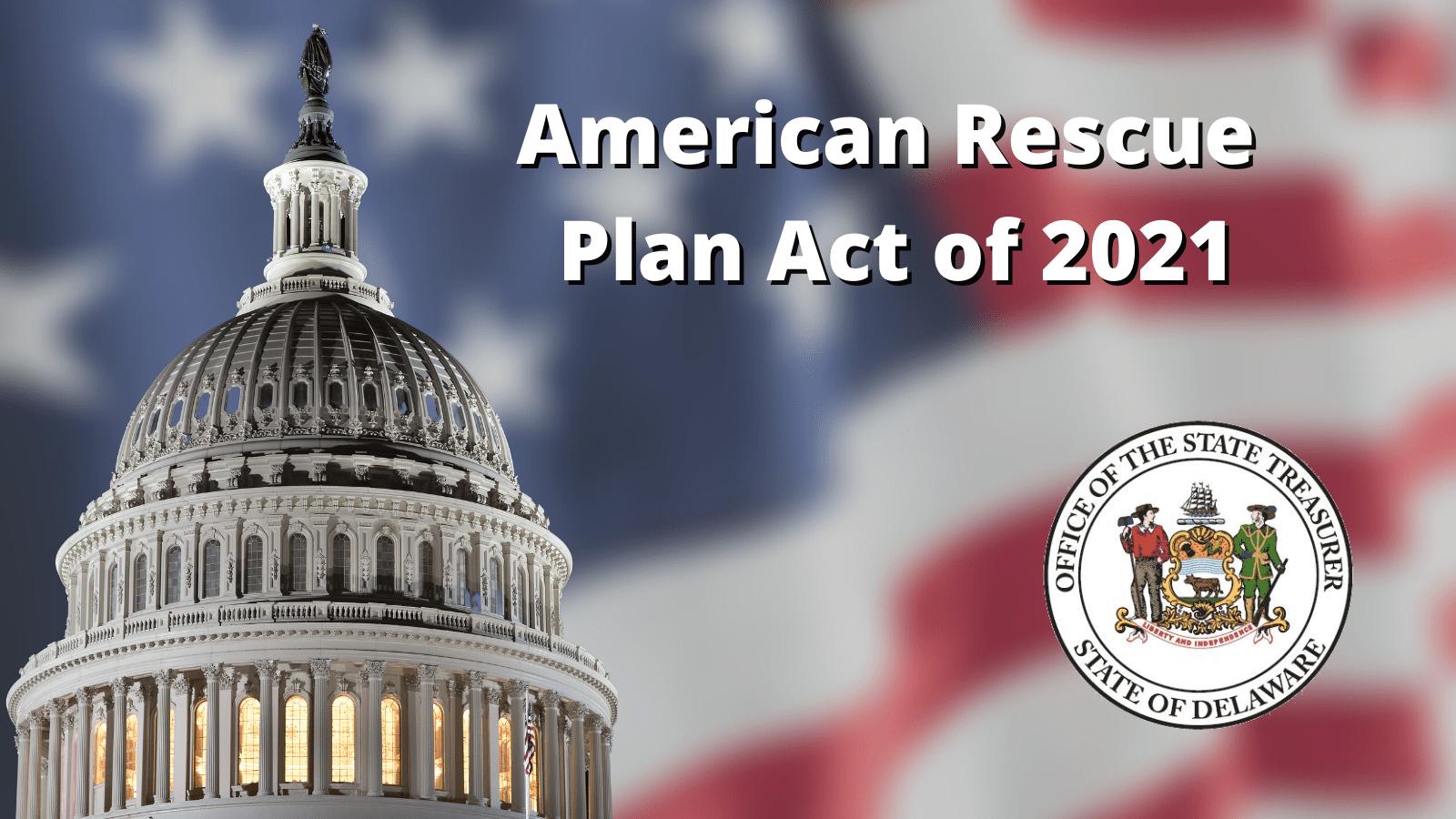


The Street Fund provides for the operations and maintenance of the City’s street and storm system, bikeways, and pedestrian element. The major funding for these operations is State Highway appropriations. State Highway revenues are paid to cities from net receipts collected by the Motor Vehicles Division and other State agencies.
The City has approximately 11 miles of transportation facilities to maintain Ferry Street and 3rd Street are both State Highways The City partners with Oregon Department of Transportation (ODOT) for maintenance and upkeep of these streets
Over the last five years, the City has been awarded Small City Allotment grants from ODOT to complete the overlays of several city streets including Main Street between 3rd and 5th, 5th Street, 6th Street, and in FY23-24, the City has been awarded a $250,000 grant from ODOT to complete the overlay of 7th Street between Ferry and Church as well as a portion of 9th Street and Church Street.

The Water Utility Fund provides for operations of the City’s water treatment, pumping, and distribution system The City owns seven wells, co-owns a well with Lafayette, operates two additional wells in partnership with the City of Lafayette, and operates the Breyman Watershed Area, which is comprised of natural spring water The City will continue significant infrastructure investment into the City’s drinking water system this year
The City operates a Water Treatment Facility in accordance with an Intergovernmental Agreement with the City of Lafayette. The facility is located in Dayton, but both cities use the facility to treat water The operation and maintenance of the facility is shared, based on the water usage
In 2014, the City purchased the former Dayton Nursery for the water rights and wells on the property. There are four wells that the City can potentially tie-in to the City’s water system. The City has obtained the water rights and is currently looking for funding for this project.
Improvements to the City’s main water source at the Breyman Watershed Springs were completed in the summer of 2014. In FY 2015-16, the City implemented a Well Maintenance Program for the wells shared with the City of Lafayette in order to get as much production as possible out of the wells, which will further improve the amount of water available to the City. In FY2019-2020, the City completed a meter replacement project for the entire system changing over to radio read meters. In 2021 the City completed a water rate study and changed to a meter-size rate methodology and reduced the base usage from 400 cubic square feet to 200 which positively impacted households with lower usage
The City will be doing a Water Master Plan Update in FY2025-2026.

This page intentionally left blank
The Sewer Utility Fund includes administrative, engineering, and inspection related to the sanitary sewer system and lagoons. It includes expenditure funds for sanitary sewer line repair and maintenance, lift station repair and maintenance, lagoon maintenance and the de-chlorination system maintenance.
In FY2018-2019, the City completed the Ferry Street Trunk Sewer and Main Pump Station project which upgraded a large portion of our system. In FY22-23, the City completed a sewer rate study and started a Sewer Master Plan Update. The infrastructure expansion needed due to the UGB Swap completed in 2022 will require a new Sewer Master Plan to help in acquiring future funding.
With a system of 1965 porous concrete pipes, storm water seeps into our sewer system and elevates the levels at the sewer ponds. City staff are working to mitigate this issue and seeking additional funding through a Congressional Direct Spending request through Senator Wyden and Merkley’s offices for $2 million.
The Sewer Rates in the 2024/25 budget include a monthly increase to each system user of $18. Five dollars a month will be used to cover increased costs the Sewer Fund has experienced in 2024 and thirteen dollars a month will be used to pay for the Footbridge and Hwy 221 Lift Station Replacement projects.

In the early 1970’s Federal and State governments developed a system to return some of the State and Federal funds to the local level. These funds were distributed to the Cities and were used for a variety of activities or purchases. The Revenue Sharing Fund receives receipts under the State Revenue Sharing program which distributes a portion of the State Liquor Tax to local government.
The State Revenue Sharing Fund is a discretional fund that supports community events and activities as directed by the City Council. It can also be used to support other Funds within the budget that enhance other projects that are important to the community.
Events this fund supports are Old Timers Weekend, National Night Out, Christmas Tree Lighting at Courthouse Square Park, Breakfast with Santa and Bazaar, the City-Wide Spring Clean-up week, and the return of a Carnaval de Cinco de Mayo.

500-000State Revenue Sharing Fund Revenue
500-500State Revenue Sharing Fund Expenditures
The City’s Capital Funds represent those monies being spent on Capital Improvements for the City.
The following pages highlight our Capital Funds that include the Water Capital Fund, the Sewer Capital Fund, the Street Capital Fund, the Parks Capital Fund, the Equipment Replacement Fund, and the Building Reserve Fund. These funds receive transfers from the other funds and the money is then used to finance the construction or purchase of new or upgraded assets for the City.
Also included in the Water, Sewer, Street, and Parks capital funds are revenues from System Development Charges (SDC’s) associated with new development. These charges are to be used to pay for the cost of extra capacity or extension of improvements for water, sanitary or storm sewer facilities, streets, or parks. System Development Charges are contributed as the priority revenue source to these projects, then transfers from other funds
The Water Capital Fund primarily receives money from the Water Utility Fund, from grant sources, and from System Development Charges (SDCs) for improvements to the City’s water system and treatment facilities.
Major Projects to be completed for fiscal year 2024-2025 include:
• Waterline Upgrade for the Utility Bridge
• PLC Upgrades for the Water Treatment Plant
• Waterline Replacements
• Reservoir Maintenance
The Sewer Utility Capital Fund receives money from the Sewer Utility Fund and System Development Charges (SDCs).
The next big capital project coming up is be the Dayton Utility Bridge with Infrastructure upgrades. Also known in town as “The Footbridge”, this bridge carries our water and sewer infrastructure across the Yamhill River. The City and Council spent considerable time researching the possible replacement options before settling on a steel midspan replacement between the A frames. Financing has been secured through DEQ for $6 million. This debt will have to funded through user rate increases so the City has been applying for grant funding to reduce the amount of loan needed. Recession increased the cost of the project from $4.2 million to $7.5 million. The City acquired a grant in 2021 for $1,000,000 from a Yamhill County ARPA grant program which has been used for bridge design and the waterline replacement which the DEQ loan cannot fund.
Building on the bridge will start in May of 2023 with anticipated completion in the summer of 2024 barring no substantial delays due to supply chain issues. The temporary work bridge will remain after for a short period of time
Major Projects to be completed for fiscal year 23-24 include:
• Construction of the Utility Bridge Mid-Span Replacement with Infrastructure Upgrades
• Construction of the HWY 221 Lift Station
• Aerator Installation
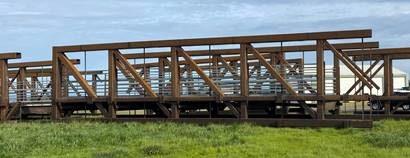
The 220-foot steel midspan replacement before it is assembled and craned over the Yamhill River and attached to the concrete abutments. It weighs approximately 225,000 lbs.
This fund is used for the purchase or major improvement of the City’s equipment and vehicles. It receives revenue from transfers from the Street Fund, the Water Fund, the Sewer Fund, and the General Fund
In the Spring of 2022, the City had an opportunity to purchase a used street sweeper for $60,000. The Public Works staff took over the cleaning of our streets in April of 2022. Streets are cleaned twice a month when weather allows
In the current fiscal year, the City needs to trade in the current tractor and purchase a new larger one.
FY 2023-2024 Capital Investments include:
• 1 new tractor
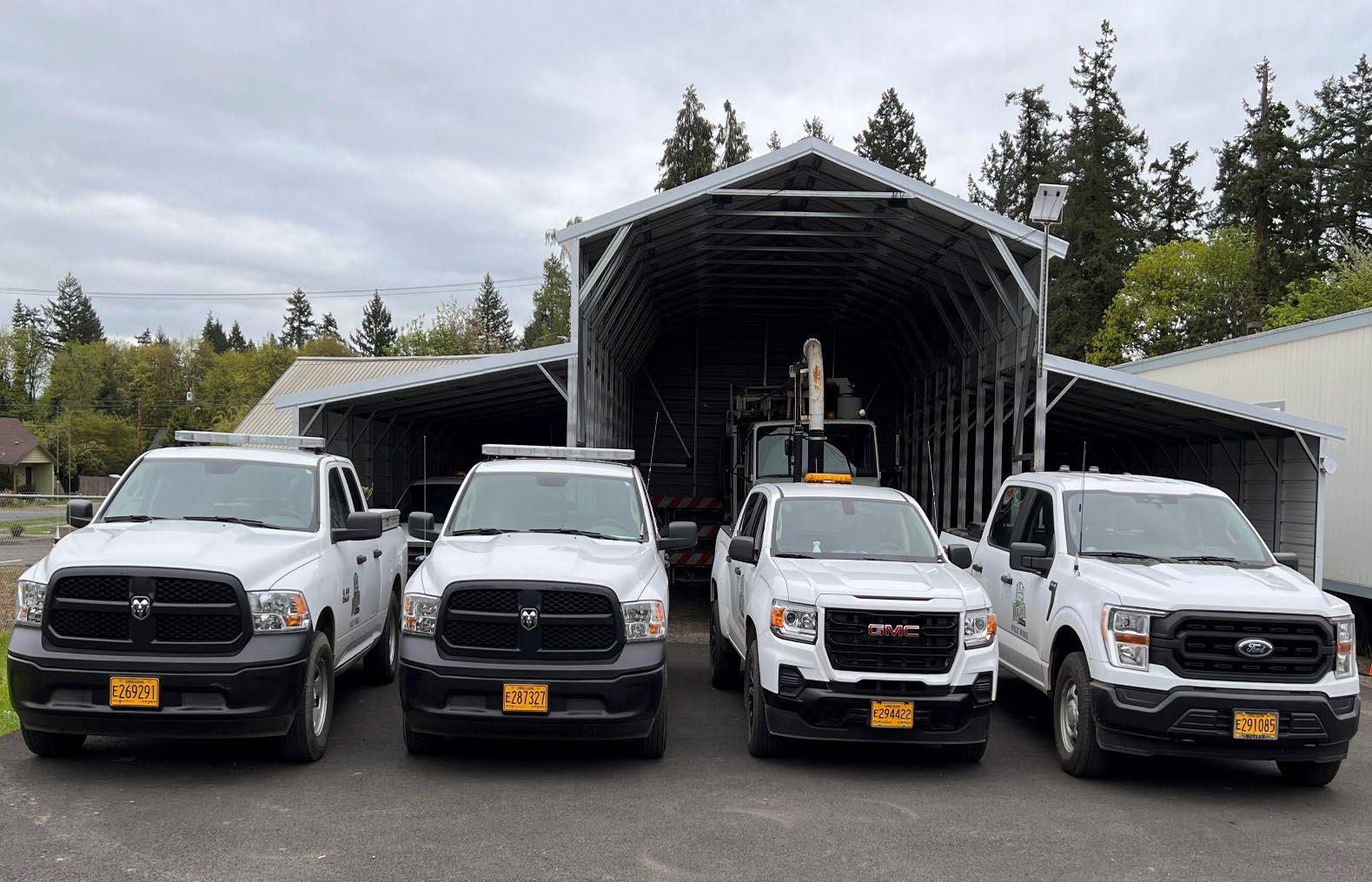
The Building Reserve Fund is used for all major construction of City facilities. As the City Council has made it a goal to build a new City Hall, fund transfers to the Building Reserve Fund will continue to increase over the next fiscal year.
In 2018, the City of Dayton took ownership of Dayton Village, a property located off Ferry Street between 9th and 10 Streets The acquisition required that any ensuring development be deemed “affordable” for lower-income purchasers
The City created a request for proposal (RFP) in November 2024, and received interest from Community Home Builders (CHB), a Yamhill County Community Development Corporation. CHB has been assisting low-income individuals and families with obtaining home ownership since 1994. Their mutual Self-Help Program requires participants to work together building each other’s homes creating a sense of ownership beyond simple purchase. To make loans affordable, CHB facilitates 502 Direct Loans where a portion of a buyer’s loan payment is paid by USDA Rural Development.
Building is expected to begin as early as the summer of 2024. A total of 10 units will be built on the property with additional parking space designated for homeowner use. The project will be completed within a one-year period from the start of construction. In exchange for referenced property, the city will receive 310,000 dollars.

FY 2024-2025 Capital Investments include:
• Roof Replacement on City Hall & Mary Gilkey Library
• Flooring Repair and Replacement at the Community Center
• Bandstand Rehabilitation
• Dayton Village Development
The Street Capital Projects Fund receives transfers from the Street Fund and General Fund as well as grant proceeds to complete upgrades to the City’s streets, storm system, bikeways, and pedestrian element. The City received two Small City Allotment (SCA) grants which funded the street overlay projects on Main Street and 5th Street that were completed in 2020 and the 6th Street Overlay which was completed in 2022.
In December of 2020, the City was awarded a $750,000 grant from the Oregon Department of Transportation’s Safe Routes to School program The City completed the sidewalk improvements from 9th to Ferry in the fall of 2022 and with project savings, extended the project to include the sidewalks from 6th to 8th Street In 2023, the City completed a road overlay of 7th Street, a portion of 9th Street, and Church Street with a $250,000 Small City Allotment (SCA) Grant. The City will apply for another $250,000 SCA in July of 2024.
In FY 2024-25, the City will be developing a 50/50 Sidewalk Program for Dayton residents. Working in partnership with the city, residents will be able to seek 50% of the funding to improve their sidewalks.
• Continued street overlays

The Park Capital Projects Fund receives transfers from the General Fund and grant proceeds for the improvement of City Parks.
A City Council Strategic Goal includes developing a strategy for improvement of the County’s Dayton Landing Park and boat ramp including permitting, funding, construction and possible ownership The City is working with Yamhill County Parks and the Oregon Marine Board on this project
In 2022, the City completed upgrades to Alderman Dog Park by adding a fence around the perimeter and a water feature for dogs and their humans.
In 2023/24, the City completed the bathroom installation at Andrew Smith Park with Transient Lodging Tax funds that residents selected through a park improvement survey in 2022.
The major projects for fiscal year 2024-2025 include:
• Parks Master Plan (if grant funding is received)
• Courthouse Square Park Improvements – Post Clock and Playground Shading

The Debt Service fund accumulates money for repayment of City debt. The debt can be created by any other fund with City Council approval. Debt can be of varying natures such as bonded debt, bank loans or loans from other government agencies.
Currently, the City is paying on 3 separate loans. Two for water system improvements through the Infrastructure Finance Authority of the State of Oregon, for the Water Treatment Plant and Wells as well as the Springs Rehabilitation. One loan for the Main Pump Station and Ferry Street Trunk Sewer project which was substantially completed in 2019 and the first payment made in December of 2020.
The Utility Bridge with Infrastructure Upgrades project is starting construction in May of 2023. Anticipated substantially complete is in the summer of 2024 with the temporary work bridge coming down in the late summer. The City has secured a $5.5 million loan and $500,000 grant from Oregon’s Department of Environmental Quality Clean Water State Revolving Loan program
The Highway 221 Lift Station project debt payment will be due the December after the project closeout date This project is slated to be completed in 2025. The first payment will be budgeted for in the FY25/26 budget.

This page intentionally left blank

This page intentionally left blank
This page intentionally left blank
